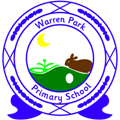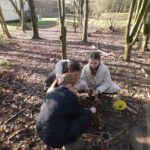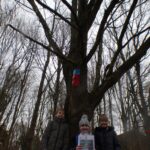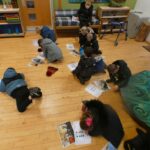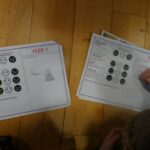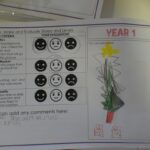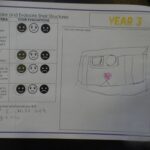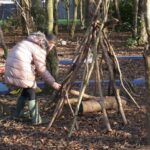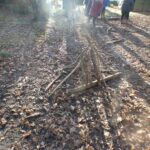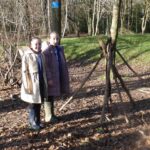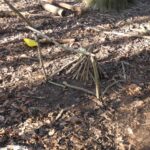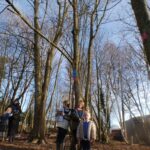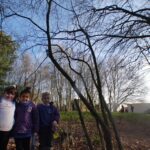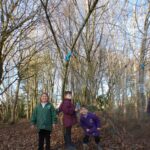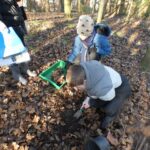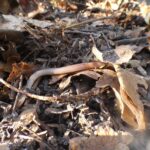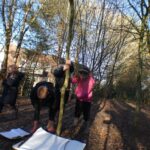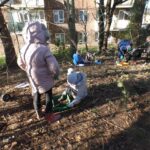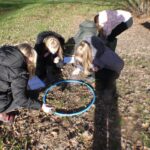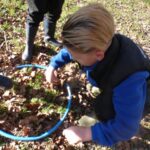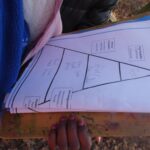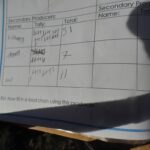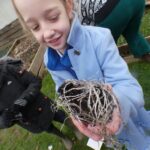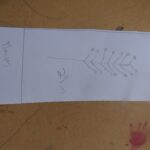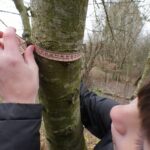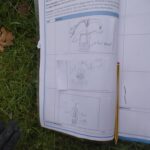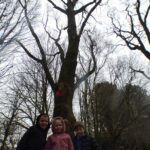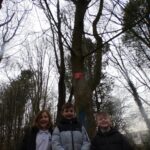Understanding Sliders in Design and Technology
In DT we continued to explore how sliders and levers play a crucial role in controlling movement. For instance, sliding doors and drawer mechanisms use sliders for gentle and noise-free operation. Similar to train wheels, sliders keep things on track, ensuring smooth and safe movement. They’re like the silent heroes, making sure everything operates seamlessly.
Understanding Shell Structures in Design and Technology
In DT, we continued to explore nets and shell structures. Nets, flat shapes foldable into 3D objects like cubes, illustrate the concept. Imagine cutting and folding a paper with squares and triangles to create a 3D shape. Understanding nets and shell structures is crucial in designing and constructing 3D objects, such as making sturdy cardboard boxes by folding and sticking flat pieces together. This knowledge enhances our ability to create robust and functional designs.
Understanding Frame Structures in Design Technology
In DT, we continued to explore how frame structures act as a skeleton for objects, providing strength and support, much like bones do for our bodies. Composed of robust materials like wood, metal, or plastic, they form a stable shape. Think of building a house with Lego blocks – connecting them creates strength to support the roof. Similarly, frame structures, seen in houses, bridges, bicycles, and playground equipment, resist forces like wind and pressure, demonstrating their ubiquity in creating strength and stability.
Years 1 and 2:
We delved into their previously crafted structures equipped with special criteria sheets resembling magic rules for assessment. Working individually or collaboratively, they explored the fantastic qualities of their creations, exchanging ideas to enhance them. Encouraging observation and interaction, we prompted questions like identifying sliders or creating lifting levers. Further, students worked in groups, exploring the school to identify real-world examples of levers and sliders. They documented their discoveries and engaged in discussions on the functionality of these mechanisms. The lesson aimed to foster creativity, critical thinking, and teamwork while making learning both enjoyable and informative.
Key Concept and Retrieval Questions:
What are some examples of everyday objects with sliders discussed in the lesson?
How did the teacher demonstrate the concept of sliders using simple mechanisms?
What materials were suggested for the students to use in creating their sliding mechanisms?
Years 3 and 4:
We looked at their previously crafted structures, armed with special criteria sheets serving as rules for assessment (Design Criteria). After explaining each point, they worked individually or collaboratively, assessing the excellence of their creations. Encouraging discussions and idea-sharing among peers, students identified ways to enhance their structures. The outdoor segment led them to explore natural materials, collecting items like sticks, stones, leaves, and pinecones. Following minimal guidance, students built 3D structures individually or in small groups, fostering creativity. The subsequent 3D structure hunt around the school and OC environment encouraged note-taking and sketching in small groups, documenting their exciting findings.
Key Concept and Retrieval Questions:
What are the key vocabulary terms introduced in the lesson, and how are they relevant to shell structures?
What criteria were emphasised during the activity, and why is strength, stability and materials used important in shell structures?
In what ways did the lesson encourage peer evaluation and feedback?
Years 5 and 6:
During the session, students received their previously built structures along with design criteria sheets. As we discussed each point on the criteria sheet, students comprehended the details. Their task involved individual or small group evaluations of structures using the provided criteria. Engaging in discussions with peers, they made notes on areas for potential improvement. Emphasizing planning and collaboration, students were led to an outdoor space with access to natural resources. In small groups, they constructed frame structures using gathered materials, promoting creativity and problem-solving – this also had its own rules for success which included Miss Tester hitting it with a big stick, to test for strength. A subsequent walk around the school grounds had students identifying and sketching various frame structures, recording features and identifying structural components. This lesson aimed to blend practical application, collaboration, and observation, enhancing both hands-on skills and theoretical understanding.
Key Concept and Retrieval Questions:
What types of frame structures were discussed at the beginning of the lesson, and what did students notice about them?
How did the teacher explain the concept of frame structures and differentiate them from solid structures?
What materials were provided for the students to use in creating their frame structures?
